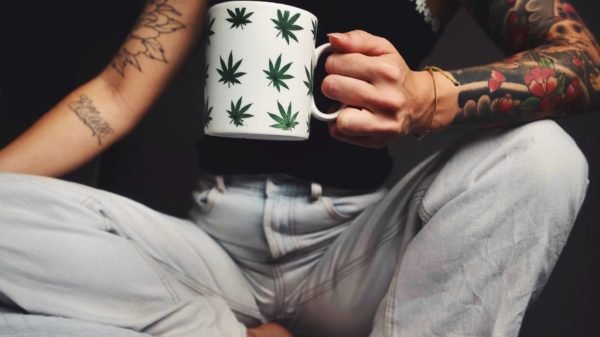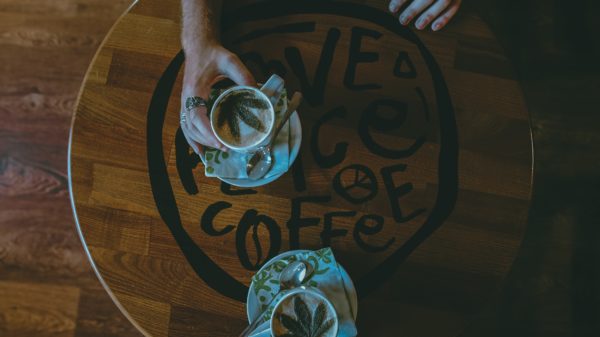What makes you a true coffeeholic? Well, if you’ve ever considered getting a coffee IV drip to sustain your caffeine levels, you’re already halfway there!
Did you know that a few of the world’s priciest coffee beans are literally passed through the digestive system of animals? Talk about a “crappy” way to wake up!
No need to drink coffee to reap the benefits! Turns out here’s a fascinating world beyond caffeine and eye rolls—rich history, record-breaking feats, and intense industry rivalries that make your beloved cup of joe truly captivating.
If you’re just learning this now, don’t fret! You’re about to get a caffeine fix of knowledge with seven fascinating facts on coffee that will perk you up faster than your morning brew.
1. ‘Coffee’ Name Game
Ever been to the Qahwa House at Lombard, Illinois? Well, that’s the clue right there.
The name Qahwa originated from the Arabic word ‘Qahwah,’ meaning coffee. That’s the origin of your favorite drink’s name.
Coffee as an energy drink is traced back to the Islamic spiritual practice in the fifteenth century. The Sufi practitioners of the Islamic tradition drank it to stay up long into the night.
The Arabic scholars, royals, students, and people of higher social status entertained the coffee drink for conferences, performances, or studying. It became a ‘medicinal wine’ for them.
2. The World’s Largest Coffee Consumer
Finland is the largest coffee-consuming country in the world (as per World Population Review). The daily consumption per head is pretty high: four cups a day on average.
If that sounds a bit too high, then let us tell you that you might consume a high amount of caffeine every day without realizing it. You’d better use a caffeine calculator to find out and track your consumption.
Coming back to the Finnish, however, you might wonder what happened to their famous hard drinks like Kilju (Yeast and sugar alcohol), Lakka (Sweet cloudberry alcohol), Sahti (Finnish beer), etc., that they all came down to this tangy brown liquid!
Well, coffee helps the Finnish workers warm up through the harsh, bone-chilling ‘minus forty’ weather. It prevents them from not toppling over due to the freezing aura around them.
And did we tell you that there’s a Finnish legal mandate to have a compulsory ten-minute break at least twice every day? So much opportunity for more coffee.
3. A Guinness World Record for Drinking Coffee!
This is genuinely interesting! A cat drank coffee and landed itself in the Guinness World Records. Legit shit, right?! But what’s the connection between caffeine and a cat called Creme Puff? Well, this wasn’t just any feline; Creme Puff lived to a ripe old age of 38 and still holds the record as the world’s oldest and longest living cat. It turns out this furry coffee connoisseur enjoyed a cup every morning like she was the fancy barista of Cat Town. Who knew that a caffeine kick could be the secret to cat longevity?
4. Coffee ‘Beans’ are Berries’ Pseudonym
You might know this, but we thought we might add this to the list, just in case. Using the term ‘coffee beans’ isn’t wrong, but it’s good to know that they’re actually ‘coffee berries.’ How so?
When you look at those reddish-orange fruits in a coffee tree, what do they look like? Of course, berries.
People often confuse them with cherries (easily mistakable). But they’re versatile in taste, unlike cherries.
5. Goats Discovered Joe!
Technically, it’s true. But you can’t expect a goat to chew on coffee berries in a jungle and give reviews on it to people, right?
So, as most legends agree, what happened is that an Ethiopian goat herder, Khalid, found his goat enjoying some red berries while grazing. It seemed those berries made that particular goat highly energetic.
The goat didn’t sleep that night at all, which made Khalid spread the word to the locality the next morning. Eventually, coffee plants came to people’s attention and were later nurtured for their potential value
6. The Most Expensive Coffees!
We’ve hinted at this at the beginning of this article. Remember, the most expensive coffee? Animal poop? That’s right. The two unusual yet priced coffees are Kopi Luwak and Black Ivory Coffee.
How are they made?
Kopi Luwak is made of Toddy cat’s poops. They love to eat the sweetest coffee cherries. When they digest those cherries, they’re naturally fermented and collected in faeces form. Afterwards, the producers roast them to find fresh, sweet, textured coffee content.
The Kopi Luwak costs $35-100 a cup and $150-600 a pound— about fifteen to sixty times higher than usual coffees!
The same process is carried out for the Black Ivory coffee. The only difference is that here, the raw material remains the same (Coffee Arabica beans) and that they’re fed to Thai elephants.
Black Ivory coffees are sold for $50 a cup and above $4000 a pound.
7. Joe Arabica Vs. Joe Robusta
Do you actually taste your coffee or just drink it to recharge your system? Do you buy coffee based on its taste, texture, or form?
Coffees generally come in two basic forms: Robusta and Arabica; if you didn’t know it.
Basically, the Robusta type is acidic and much sharp in taste, whereas the Arabica tastes much calmer and more delicate to the tongue. Arabic coffee is the most produced and marketed coffee species in the world (almost 60% of total coffee consumption).
Robusta belongs to the central and sub-Saharan African Coffea Canephora plant.
And as for Arabica, its origin is Ethiopia and it belongs to the Rubiaceae family. Remember the Ethiopian goat herder from above? The legend seems to be a historical fact, indeed.
The upper red skin layer of ripe coffee berries is thick and bitter. The next layer is very sweet and grapy. The next slimy layer protects the bean itself.







